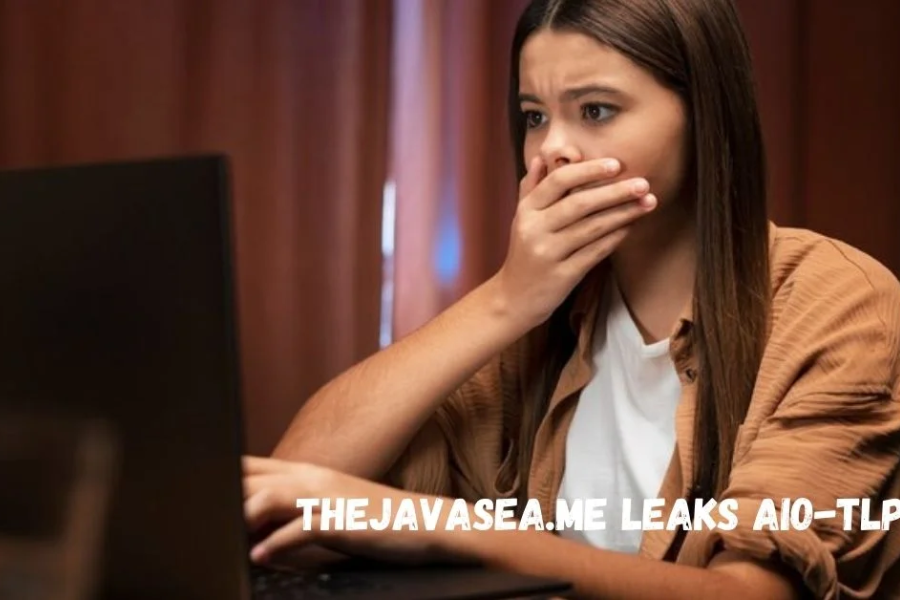The Rise of Digital Technology and the Challenge of Data Leaks: Understanding thejavasea.me Leaks and Aio-TLP
As digital technology continues to expand, it brings immense convenience, efficiency, and innovation to our lives. However, along with these benefits come significant risks, including the potential for leaks and breaches of sensitive information. Recently, the website thejavasea.me has been under scrutiny for its association with leaked data, particularly related to the Aio-TLP system. In this article, we aim to dive deep into the issue, shedding light on its implications and providing actionable steps to protect yourself from these cybersecurity risks.
What is thejavasea.me Leaks Aio-TLP?
The website thejavasea.me has made headlines for leaking sensitive data. Although the website’s exact purpose remains unclear, it has gained thejavasea.me leaks aio-tlp notoriety due to its role in hosting compromised or unauthorized information. The leaks associated with this platform involve a range of personal, business, and confidential details.
At the heart of the controversy is Aio-TLP, or All-in-One Traffic Light Protocol, a classification system designed to regulate the sharing of sensitive information within the cybersecurity community. The data leaks connected to thejavasea.me suggest that highly classified information meant for limited distribution has been exposed.
What is Aio-TLP?
Aio-TLP is a framework used in the cybersecurity industry to signal the level of confidentiality for shared information. This protocol classifies information into four distinct categories, each represented by a different color to indicate who can access and share the data. Here’s how Aio-TLP works:
- Red: Highly sensitive information that should only be shared within a strictly defined group. No further distribution is allowed.
- Amber: Sensitive information that can be shared with certain external parties on a need-to-know basis, but not openly.
- Green: Information that can be shared with a broader audience but should not be publicly distributed.
- White: Information that is not sensitive and can be freely shared with the public.
The Aio-TLP leaks associated with thejavasea.me suggest that data intended for restricted or controlled distribution, possibly classified thejavasea.me leaks aio-tlp as Red or Amber, has been made publicly available, putting both individuals and organizations at risk.
How Do Leaks Happen?
Data leaks can occur through a variety of methods, ranging from sophisticated cyberattacks to simple human errors. Here are some common ways that sensitive information may be leaked:
- Hacking: Cybercriminals can infiltrate systems through vulnerabilities to steal data. This often involves exploiting weaknesses in a company’s or individual’s cybersecurity infrastructure.
- Phishing Attacks: In phishing scams, hackers send fraudulent messages designed to trick recipients into revealing sensitive information like passwords, credit card numbers, or login credentials.
- Insider Threats: Sometimes, individuals within an organization, whether intentionally or unintentionally, leak sensitive data. Insider threats can come from employees, contractors, or other trusted associates.
- Poor Security Practices: Weak passwords, lack of encryption, outdated software, and insufficient security protocols can make systems highly vulnerable to attacks. Often, inadequate security measures serve as an open door for hackers.
The Impact of Leaks
The consequences of data leaks can be devastating, affecting both individuals and businesses. Let’s examine some of the far-reaching impacts:
Personal Consequences
For individuals, having personal data leaked can lead to significant problems, including:
- Identity Theft: Cybercriminals can use stolen information such as Social Security numbers, bank details, or other identifying data to commit fraud or steal a person’s identity.
- Financial Loss: Victims of data breaches may find their bank accounts compromised, with funds siphoned off by attackers.
- Emotional Distress: The anxiety and stress caused by knowing your personal data is circulating in the wrong hands can be overwhelming, impacting emotional well-being and peace of mind.
Business Implications
The consequences for businesses affected by data leaks can be equally, if not more, damaging:
- Loss of Competitive Advantage: If proprietary information or trade secrets are leaked, it can give competitors an unfair edge, potentially harming the company’s market position.
- Legal and Financial Repercussions: Businesses may face lawsuits from affected customers or regulatory bodies. Fines, penalties, and legal settlements can reach into the millions for severe data breaches.
- Reputational Damage: Trust is crucial in the business world. A breach can severely damage a company’s reputation, leading to a loss of customer confidence and long-term revenue losses.
Increased Cybersecurity Threats
Data leaks also pose a broader threat to cybersecurity:
- Vulnerability Exploitation: Leaked information often includes insights into a system’s security protocols, making it easier for hackers to identify and exploit vulnerabilities.
- Expanded Attack Surfaces: Once sensitive data is leaked, it can lead to further breaches. For example, stolen passwords or credentials may be used in credential-stuffing attacks across multiple platforms.
How to Protect Yourself
Given the increasing frequency and scale of data leaks, protecting yourself from such incidents is essential. Here are some key measures to safeguard your personal and professional data:
1. Strengthen Your Passwords
Creating strong, complex passwords is a critical step in protecting your online accounts. Avoid simple or predictable passwords thejavasea.me leaks aio-tlp like “123456” or “password.” Instead, use a combination of letters, numbers, and symbols. Consider using a password manager to securely store your passwords and generate new ones.
2. Enable Two-Factor Authentication (2FA)
Two-factor authentication adds an extra layer of security to your accounts. Even if a hacker obtains your password, they will still need a second form of verification—such as a code sent to your phone—before they can gain access. Always enable 2FA where available.
3. Stay Informed About Cybersecurity Threats
Keeping up with the latest cybersecurity thejavasea.me leaks aio-tlp news and trends is crucial for staying ahead of potential threats. Subscribe to newsletters or follow trusted cybersecurity organizations to stay updated on new risks and best practices.
4. Monitor Your Accounts Regularly
It’s important to regularly check your financial accounts, email, and other sensitive platforms for any signs of unauthorized activity. Early detection is key to minimizing the damage caused by a potential breach.
5. Install Security Software
Invest in comprehensive security softwarethejavasea.me leaks aio-tlp that includes antivirus, anti-malware, and firewall protection. Ensure your software is regularly updated to detect and block new threats.
Conclusion
The recent leaks associated with thejavasea.me and Aio-TLP bring to light the growing importance of robust cybersecurity practices. Whether you are an individual or a business, understanding the risks of data leaks and taking proactive steps to protect sensitive information is crucial in today’s digital world.
While the digital landscape continues to evolve, so too do the tactics of cybercriminals. To safeguard your personal and professional life, adopting strong security measures, staying informed, and remaining vigilant are your best lines of defense. By doing so, you can reduce the risk of falling victim to the next major leak.
Facts:
- Website Involvement: Thejavasea.me has recently gained attention for being a platform that hosts leaked sensitive information, impacting both individuals and organizations.
- Aio-TLP Explained: Aio-TLP (All-in-One Traffic Light Protocol) is a classification system in cybersecurity used to denote the level of confidentiality for shared information, ranging from highly sensitive (Red) to publicly shareable (White).
- Leak Types: The information leaked on thejavasea.me includes personal details, proprietary business information, and other classified data, some of which were intended for restricted access under Aio-TLP guidelines.
- Leak Methods: These leaks often occur due to hacking, phishing, insider threats, or poor security practices such as weak passwords or outdated software.
- Consequences of Leaks: Personal impacts include identity theft, financial losses, and emotional stress, while businesses may face reputational damage, legal action, and increased cyber vulnerability.
- Cybersecurity Measures: Individuals and organizations are encouraged to strengthen passwords, use two-factor authentication, stay informed about cybersecurity trends, monitor accounts regularly, and install robust security software to protect against leaks.
FAQs:
- What is thejavasea.me?
- Thejavasea.me is a website that has gained attention for hosting leaked sensitive information, including personal, business, and confidential data.
- What is Aio-TLP?
- Aio-TLP stands for All-in-One Traffic Light Protocol, a system used in cybersecurity to classify the sensitivity of shared information into four categories: Red (highly sensitive), Amber (restricted sharing), Green (shared within a community), and White (publicly available).
- How do data leaks happen?
- Data leaks occur through hacking, phishing attacks, insider threats, or poor security practices such as weak passwords or outdated software.
- What are the personal impacts of a data leak?
- Individuals can face identity theft, financial losses, and emotional distress due to the exposure of personal information in a data leak.
- How do data leaks affect businesses?
- For businesses, data leaks can result in a loss of competitive advantage, legal repercussions, reputational damage, and increased cybersecurity risks.
- How can I protect myself from data leaks?
- You can protect yourself by using strong passwords, enabling two-factor authentication, staying informed about cybersecurity threats, regularly monitoring your accounts, and installing comprehensive security software.
- What should I do if my data is leaked?
- If your data is leaked, immediately change your passwords, monitor your accounts for suspicious activity, and consider placing fraud alerts on your financial accounts. It may also be helpful to contact a cybersecurity professional for advice.






